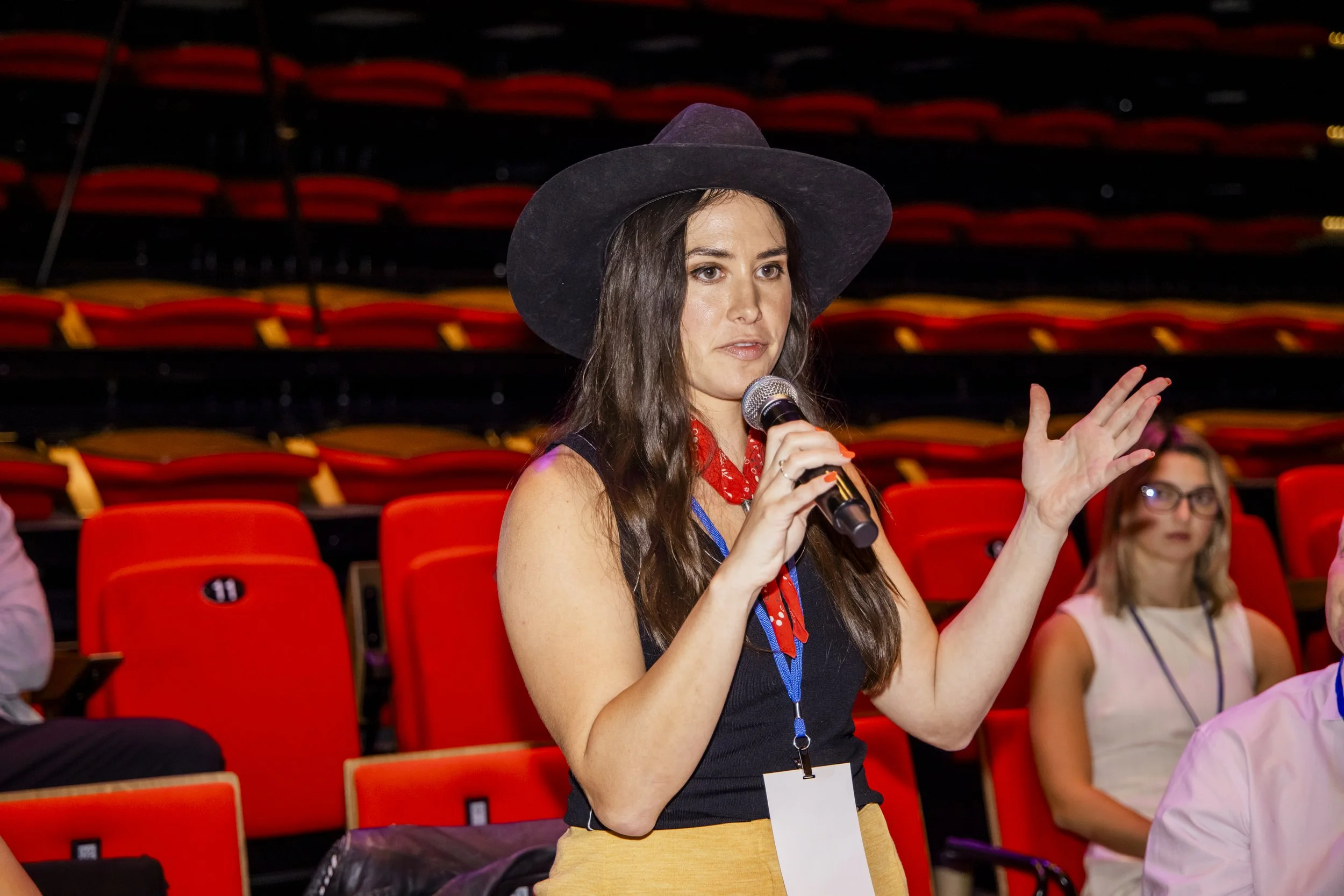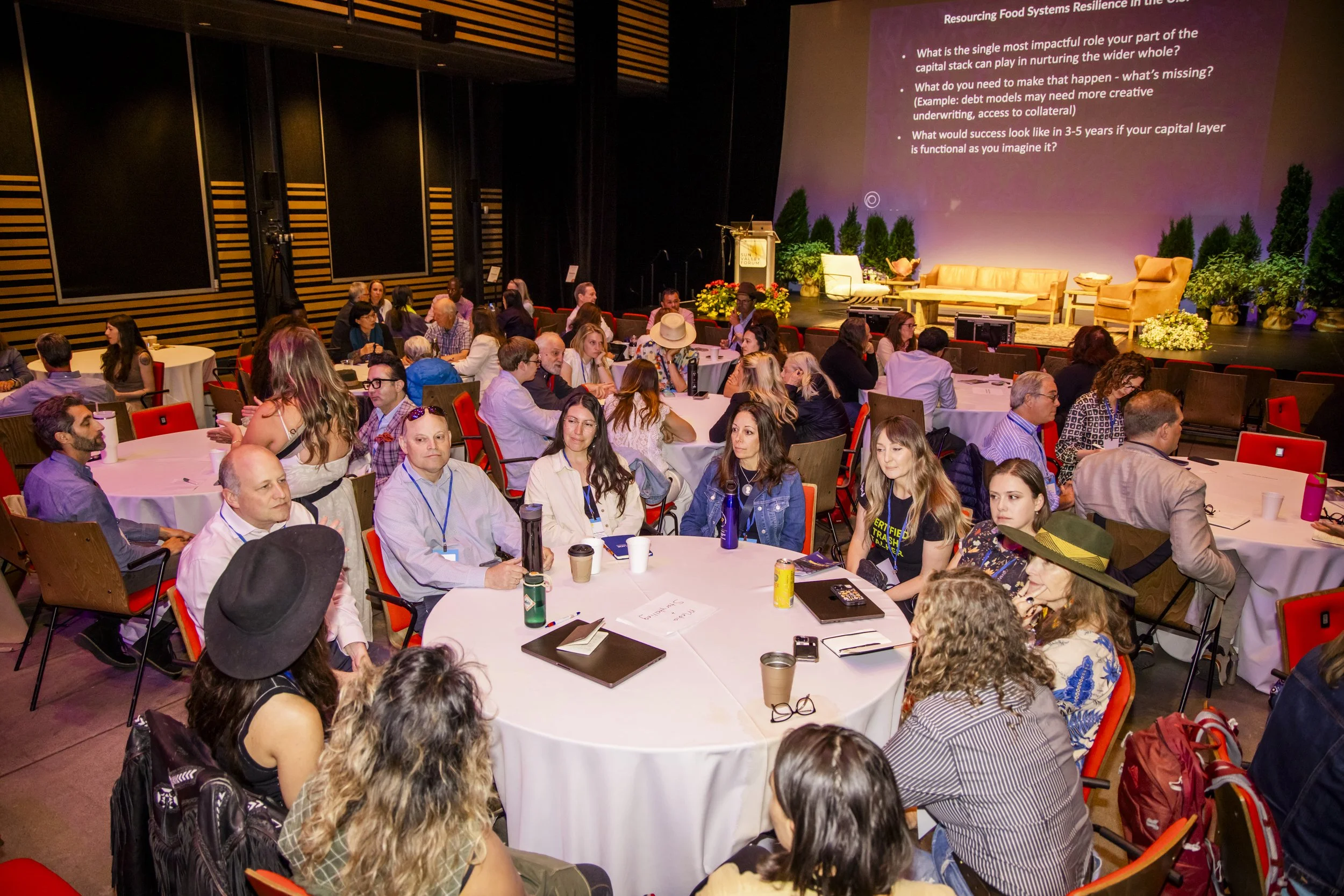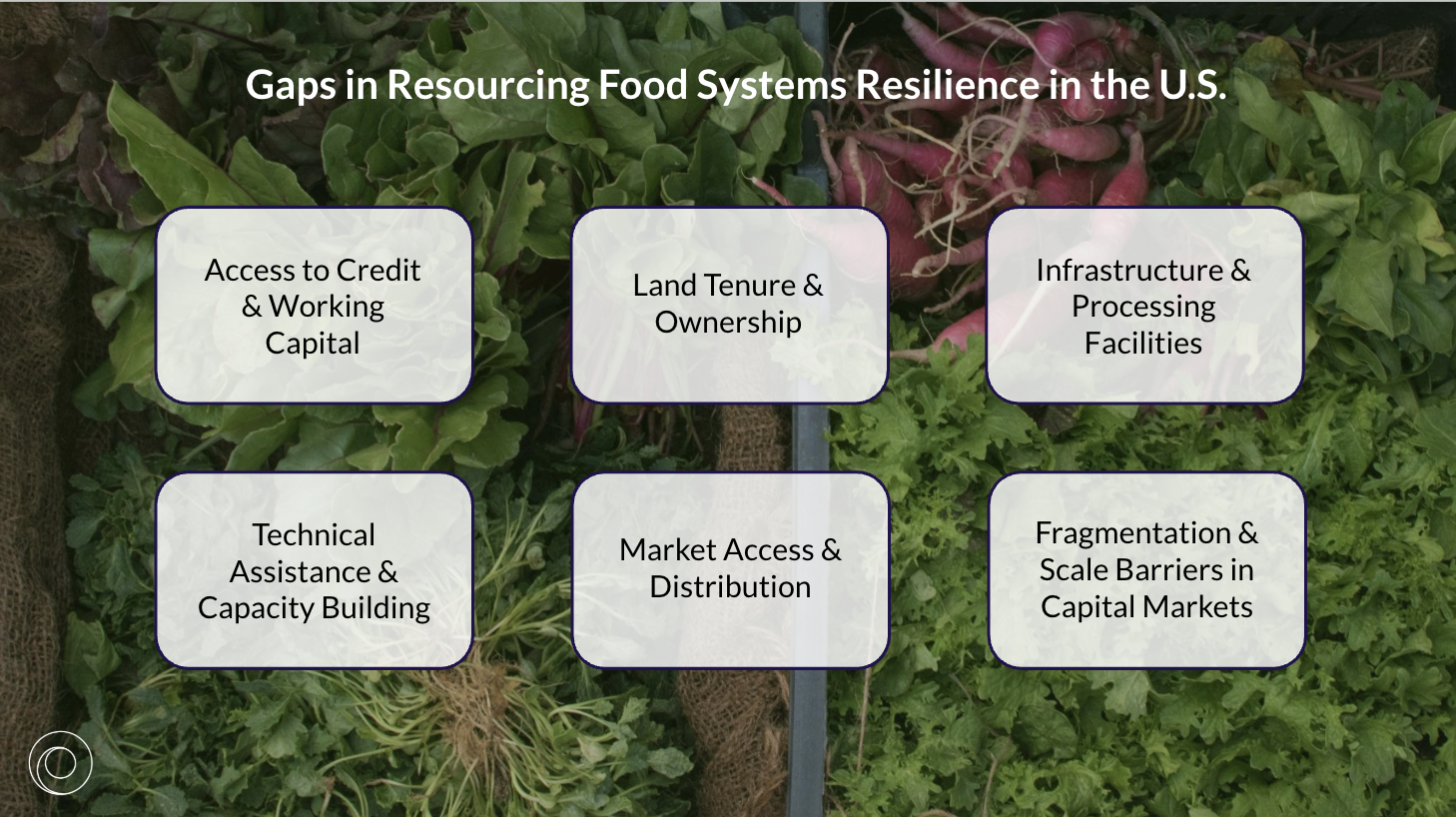Multiplier Effect: Catalytic Capital for Regenerative Food Systems — Financing What Works
I. the Sun Valley Forum Multiplier Effect Sessions
The Sun Valley Forum is hosted annually by Christensen Global as a catalyst for climate solutions and a hub for connecting diverse visionaries and changemakers around a shared purpose. Its Multiplier Effect (ME) sessions are designed to illuminate key strategies, spark conversation and drive action by leveraging the Forum’s year-round expertise, reach, and resources. These workshops are discussion-based, beginning with presentations on the mainstage, followed by interactive working sessions to deepen engagement, resulting in concrete recommendations, initiatives and collaborations.
II. About this Multiplier Effect Session
The Catalytic Capital for Regenerative Food Systems ME session was hosted by the Open Future Coalition, gathering funders, practitioners, and policymakers to share strategies for how capital can better serve community-led solutions. Facilitators Kaitlin Archambault, Founder & CEO of Open Future Coalition, and Sushant Shrestha, Managing Partner of Open Future Fund, featured case studies of how catalytic capital can fill critical financing gaps to build resilient food systems. Against the backdrop of long-term public disinvestment in the U.S., leaders from 5th C, Agricultural Platform Collective, the Southern Farmers Financial Association, North Carolina A&T, and Future Roots emphasized the need to resource the connective tissue of our food systems and shared how their initiatives are strengthening shared infrastructure, land access, technical assistance, and policy reform.
III. The Challenge
Traditional funding models fall short of meeting the need in food systems transformation. While public investment has always been the bedrock of innovation in food systems, this public foundation is eroding fast. In 2025 alone, over $1 billion in USDA programs supporting local food systems were eliminated, while the EPA canceled over 400 climate-related grants totaling $1.7 billion. Proposed USDA budget cuts would reduce its budget by $7 billion. The public support that has historically supported regional resilience is disappearing with little solution. Given the scale and urgency, we need a reimagining of a whole system, with new sources of catalytic capital to fill this funding gap in a new way in order to unlock larger flows, bridge silos, and enable communication to drive action at speed and scale.
Gaps in Resourcing Food Systems Resilience in the U.S, (Graphic From Open Future Coalition)
IV. The Opportunity
The Sun Valley Forum community brings together deep, diverse expertise – spanning investors, storytellers, and visionaries ready for tangible action. By harnessing this collective reach, we have a powerful opportunity to collaborate, identify what’s working, address critical gaps, and accelerate solutions. Through mobilizing new resources, forging fresh partnerships, and igniting bold action, we can drive greater impact together. The goal of this multiplier effect workshop was to leverage these resources and minds to identify strategies and resources to accelerate and scale the financing of regenerative food systems.
The successful pilots shared on stage demonstrate that there are solutions ready to go. Southern Farmers Financial Association, North Carolina A&T State University’s Regeneration Engine, 5th C, Agricultural Platform Collective, and Future Roots offer practical, collaborative solutions for how to leverage public, private, philanthropic, and in-kind resources for specific projects and to build the connective tissue to allow for capital to grow and move. Catalytic capital is early, flexible, and risk-tolerant funding that activates other forms of capital by filling gaps, absorbing risk, and enabling the development of community-rooted and revenue-generating solutions. This capital builds infrastructure that allows other resources to move with integrity and alignment.
V. The Approach
ME session participants joined discussion tables led by the case study leaders as well as others who have successfully launched farmer-led financial institutions, cooperative financing models, and just-in-time capital structures supporting BIPOC and small-scale producers. Together, they worked to answer practical questions and co-designed pathways for deploying multicapital resources, contributing to a shared agenda for scalable, community-rooted financial solutions. Roundtable discussions surfaced bold, practical examples and recommendations: debt strategies tailored to small producers, first-loss guarantees, five-year philanthropic commitments, land stewardship partnerships, and predevelopment funding that de-risks early-stage work. Participants emphasized that catalytic capital should help communities access working capital on equitable terms, support capacity-building over control, and unlock larger flows of aligned investment.
VI. Key Takeaways
The clear takeaway is that resilient food systems require more than just funding—they need capital coherence, rooted in trust, shared risk, long-term alignment, and a readiness to follow local leadership. Participants emphasized aligning public, private, and philanthropic investments with cooperative ownership models, inclusive land access, and circular economic principles. Conversations underscored the importance of policy advocacy, proper use of 501(c)4 dollars, trusted data and monitoring, reporting and verification (MRV) systems, and cross-sector institutional alignment to guide capital and regulatory frameworks efficiently. Storytelling and media were uplifted as essential tools to connect values-aligned investors with farms and land stewards, highlighting the economic and environmental benefits of regenerative practices. Overall, conversations reinforced that while we have the tools to make efficient change, what is needed is shared frameworks, deeper collaboration, and reaching those owners and managers of major capital sources including institutional capital in order to fund and scale these bold, integrated investment strategies that center people, place, and the planet.
Please join us on the Open Impact Platform to continue the conversation and activate catalytic capital to deliver the impact needed to build regenerative, restorative, and resilient food systems. Access this tutorial on how to join our Sun Valley Forum Community on the Open Impact Platform.
To learn more, watch the full session Catalytic Capital for Regenerative Food Systems: Financing What Works on the Sun Valley Forum YouTube channel









